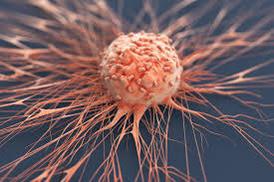A recent study published in The Lancet Regional Health Southeast Asia journal revealed that India, China, and Japan were the top three countries in Asia for both new Cancer cases and deaths. The research emphasised the increasing significance of cancer as a public health threat in the Asian region, with a total of 9.4 million new cases and 5.6 million deaths across Asia in 2019.
An international research team, which included members from the National Institute of Technology Kurukshetra and All India Institute of Medical Sciences (AIIMS) in Jodhpur and Bathinda, revealed that, In 2019, China had the highest numbers, 4.8 million new cases and 2.7 million deaths. India reported approximately 1.2 million new cancer cases and 930,000 deaths, ranking as the second-highest contributor to the disease burden in Asia for that year. In contrast, Japan documented approximately 900,000 new cases and 440,000 deaths.
In their study, the researchers investigated the temporal patterns of 29 different cancers across 49 Asian countries from 1990 to 2019. They based their analysis on estimates derived from the Global Burden of Disease, Injuries, and Risk Factors 2019 Study (GBD 2019).
As the research indicates, the predominant cancer in Asia was tracheal, bronchus, and lung (TBL), accounting for approximately 1.3 million cases and 1.2 million deaths, most prevalent among men and the third most prevalent among women. For women specifically, cervical cancer ranked second or within the top five cancers in various Asian countries. The researchers highlighted the effectiveness of the human papillomavirus (HPV) vaccine, introduced in 2006, in preventing the disease and lowering HPV-related fatalities.

Across the continent and in individual countries, tracheal, bronchus, and lung (TBL), breast, colon and rectum cancer (CRC), stomach, and non-melanoma skin cancer emerged as the top five most prevalent cancers in 2019. Leukemia, prostate, liver, and pancreatic cancers were featured in the list for some countries.
Additionally, the study emphasized that smoking, alcohol consumption, and ambient particulate matter (PM) pollution remained prominent among the 34 identified risk factors for cancer. The researchers expressed concern about the escalating cancer burden associated with increasing ambient air pollution in Asia, with industry-led economic growth along with urbanisation, rural-to-urban migration and increasing usage of motor vehicles, being the the primary reasons for increasing air pollution in Asia.
The State of Global Air Report, developed in partnership with the Institute for Health Metrics and Evaluation's GBD project, revealed that in 2019, five Asian countries—India, Nepal, Qatar, Bangladesh, and Pakistan—were among the top 10 nations with the highest population-weighted annual average of PM2.5.
They also said that a high prevalence of smokeless tobacco (SMT) such as khaini, gutkha, betel quid and paan masala is a public health concern in South Asian countries such as India, Bangladesh, and Nepal, with India alone accounting for 32.9 per cent of global deaths and 28.1 per cent of new cases of lip and oral cavity cancer in 2019.
The research team noted that over 50% of the burden of oral cancer is linked to the use of smokeless tobacco, and its prevalence has risen in South Asia, particularly in India. Smokeless tobacco not only elevates the risk of oral cancers but also increases the likelihood of esophageal and pancreatic cancer.
Additionally, the researchers highlighted that improved water and sanitation measures could contribute to reducing the transmission of Helicobacter pylori (H. pylori), potentially lowering the risk of stomach cancer.
The researchers observed a consistent pattern across developing countries, noting a decline in cancer burden among younger age groups alongside an increase in cancer cases linked to rising life expectancy. They identified a decrease in the burden of cancers like leukemia in those under 5 years old from 1990 to 2019. Simultaneously, there was an increase in cancers associated with longer lifespans, such as prostate, pancreatic, and breast cancer during the same period.
The team emphasized that merely having access to screening might not improve survival rates if cancer treatments are either unavailable or unaffordable. In low- and medium-income countries (LMICs) in Asia, oncologic infrastructure is often scarce or unaffordable, especially in rural areas.
Survival rates are adversely impacted by delayed diagnosis and treatment, especially when combined with an inefficient referral system. Emphasizing the significance of prompt access to screening and treatment, it is crucial to address policy priorities such as cost-effectiveness and comprehensive coverage of treatment expenses.
©️ Copyright 2023. All Rights Reserved Powered by Vygr Media.









